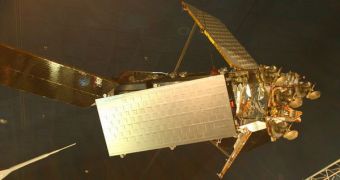Starting with fiscal year 2009, Japan's fresh satellite surveillance program will be an important step forward for the country's intelligence network, as the new device will be endowed with a camera featuring one of the largest resolutions to date. On Saturday, officials announced that the fine sensor would be able to identify and pinpoint the exact location of various objects on the Earth's surface with a precision greater than that of any of the existing commercial satellites. This means that the technology will be able to spot objects as small as 40 centimeters in size, which truly means that the word privacy needs a new definition, both in Japan and worldwide.
A demo satellite featuring the build is scheduled to be launched into orbit come 2012, and Tokyo officials will then asses the feasibility of the project, in terms of costs and benefits. If it proves to work without a hitch, the program could then be extended to a more numerous group of “eyes-in-the-sky.” Scientists working on the R&D part of the new surveillance system say under condition of anonymity that, if everything goes according to plan, Japan could have its fully operational next-gen satellite up in the skies by fiscal year 2014.
The Basic Law on Space, enacted in the country in May, gives the government the right to consider the orbital space above the country as a part of its territory, and also grants it authority to use this space for defense purposes. Thus, the Optical No. 5 satellite will be used to supply valuable information to the Japanese intelligence agencies, about things going on in various parts of the world, where the nation has interests.
The entire project will cost more than 10 billion yen, or roughly $111 million, and the money will be divided between the Optical No. 5 (6.8 billion yen) and the test satellite (3.3 billion yen). "By bolstering the performance of the nation's intelligence satellites, this country should further enhance the quality and quantity of image information that can be acquired by the satellites," reads the "basic outline for a space development strategy" announced by the Defense Ministry on January 16.
Though exact information about the resolution of cameras onboard military satellites belonging to all countries is yet unknown, experts estimate that only the United States have sub-40 centimeter technology readily available on their observers. If Japan manages to complete the construction of Optical No. 5, it could become the second country on Earth to have such capabilities.

 14 DAY TRIAL //
14 DAY TRIAL //